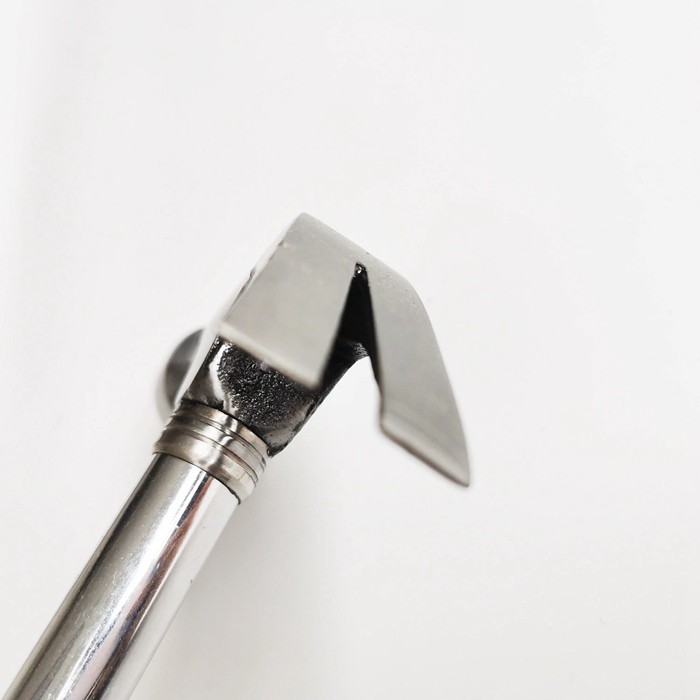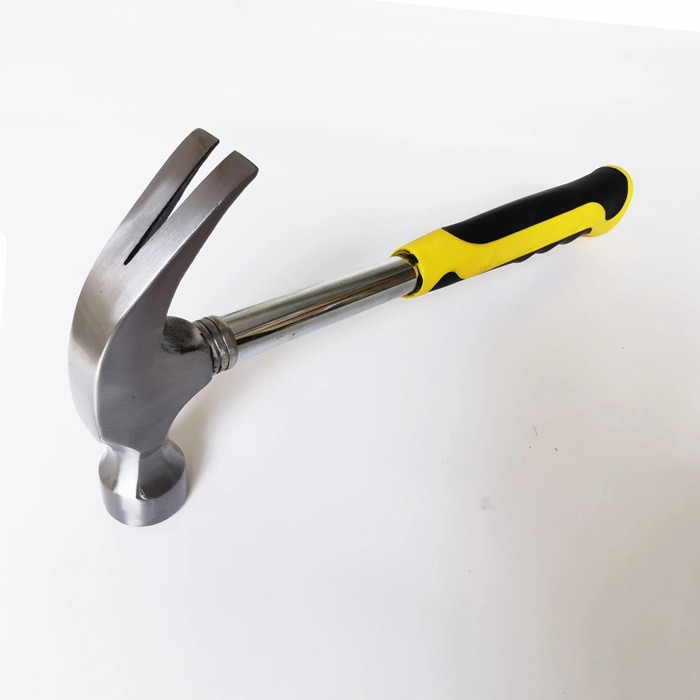Welcome!







Factory Supply Claw Nailing Tool Hardware Household Woodworking Plastic Handle Hammer with Wooden Handle
Product Description
Claw hammer, as a practical and convenient manual tool, plays an important role in fields such as construction, home maintenance, and woodworking. By understanding its structural characteristics, functional uses, and usage precautions, we can better utilize this tool, improve work efficiency, and complete various maintenance and production tasks.

When operating the claw hammer, it is recommended to wear protective equipment such as gloves and goggles to prevent injury caused by flying debris or sawdust. Choose a suitable claw hammer based on specific job requirements. Different claw hammers may vary in weight, hammer head shape, and size. Choosing a suitable claw hammer can improve work efficiency and reduce fatigue.

The claw design of the claw hammer allows it to easily grip the head of the nail and then forcefully pull it out. This function is very practical when dismantling old structures or repairing damaged objects. The claw part of the claw hammer can also be used to grab small objects or parts, making it convenient for operators to assemble or disassemble work.

Claw hammer, as a common manual tool, plays an important role in construction, home maintenance, and woodworking due to its unique design and function. This article will provide a detailed introduction to the claw hammer, including its structural characteristics, functional uses, and usage precautions, to help readers better understand and utilize this practical tool.

Hammers have high technical content, and their manufacturing process involves multiple links such as the selection of hammer material, hardening treatment, casting, hammer handle design, and fixing of hammer head and handle. Different types of hammers, such as brick hammers, frame hammers, welding hammers, nail hammers, etc., have their own unique designs and uses.

Recommended Products
Recently Viewed
 High Quality Claw Nailing Tool Hardware Household Woodworking Plastic Handle Hammer with Wooden Handle
High Quality Claw Nailing Tool Hardware Household Woodworking Plastic Handle Hammer with Wooden Handle Useful Claw Hammer Flag Handle Polished Drop Forged with Steel Handle
Useful Claw Hammer Flag Handle Polished Drop Forged with Steel Handle Factory Supply Claw Nailing Tool Hardware Household Woodworking Plastic Handle Hammer with Wooden Handle
Factory Supply Claw Nailing Tool Hardware Household Woodworking Plastic Handle Hammer with Wooden Handle Wholesale 1kg 16oz Forged Steel 700g Cast Iron Claw Hammer with Steel Handle
Wholesale 1kg 16oz Forged Steel 700g Cast Iron Claw Hammer with Steel Handle Factory Supply 1kg 16oz Forged Steel 700g Cast Iron Claw Hammer with Wooden Handle
Factory Supply 1kg 16oz Forged Steel 700g Cast Iron Claw Hammer with Wooden Handle
Contact Us
Shanghai Haocheng Machinery Parts Co., Ltd.
